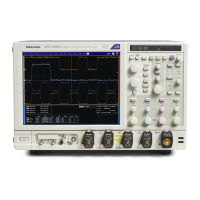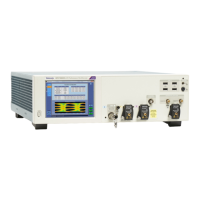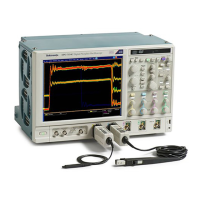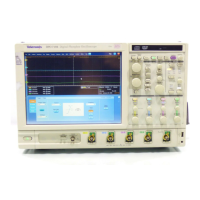How to ? Trigger o n a glitch
Trigger on a glitch
Use the following procedure to detect and trigger on a glitch, or to ignore a glitch:
1. Push the front-panel Advanced button.
2. In the Trigger control window, open the A Event tab.
3. Select Glitch from the Trigger Type drop-down list.
4. Specify the trigger source. Click S ource; then select a channel from the drop-down list.
5. Click a Polarity button to specify the glitch polarity:
Pos. Looks at positive-going pulses.
Neg. Looks at negative-going pulses.
Either. Looks at both positive and negative pulses.
6. To specify the width of the glitch, click in the Width entry box; then set the glitch width using the
multipurpose knob or keypad.
7. Select from the Glitch Width drop-down list to specify whether to trigger on glitches narrower or
greater than the width you specify:
Less Than. Trigger only on narrower pulses.
Greater Than. Trigger only on wider pulses.
8. Click in the Level entry box; then use the multipurpose knob, keypad, or front-panel Trigger Level
knob to set the level that the glitch must cross to be recognized by the instrument. You can also
set the level to a value appropriate to either the TTL or ECL logic families by selecting Logic in
the Tri
gger if Glitch drop-down list.
9. Yo u can also Trigger on a logic-qualified pulse using the Trigger if Glitch "Logic" selection. When
the instrument detects that a glitch condition has occurred, it checks the logical state of two other
available channels and triggers only if their conditions are met. Each channel can have a value of high
(H), low (L), or "don't care" (X). A value is considered high if the channel input voltage is greater
than the specified threshold voltage; a value is considered low if the channel input voltage is less
than the s pecified threshold voltage. Use the "don't care" selection for any channels that will not be
used as part of the pattern.
10. You can set the mode and holdoff for all standard trigger types. Refer to trigger mode
(see page 389)
and set holdoff (see page 474) to learn more about trigger mode and holdoff.
Trigger on a runt pulse
Use the following procedure t o detect a nd trigger on a runt pulse. The instrument can look for positive o r
negative runt pulses. These pulses can also be qualified by time or by the logical state of other channels.
644 DSA/DPO70000D, MSO/DPO/DSA70000C, DPO7000C, and MSO/DPO5000 Series

